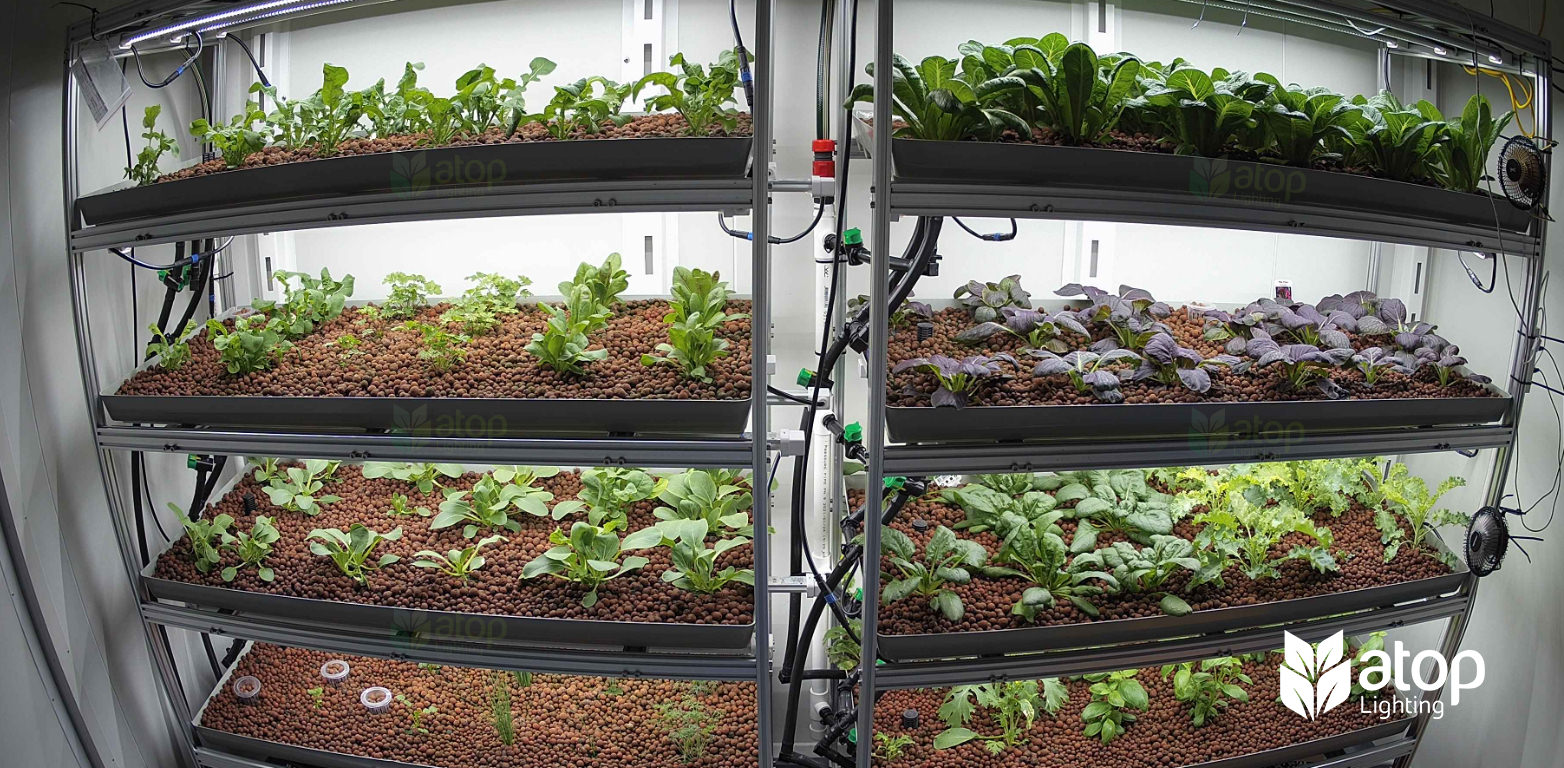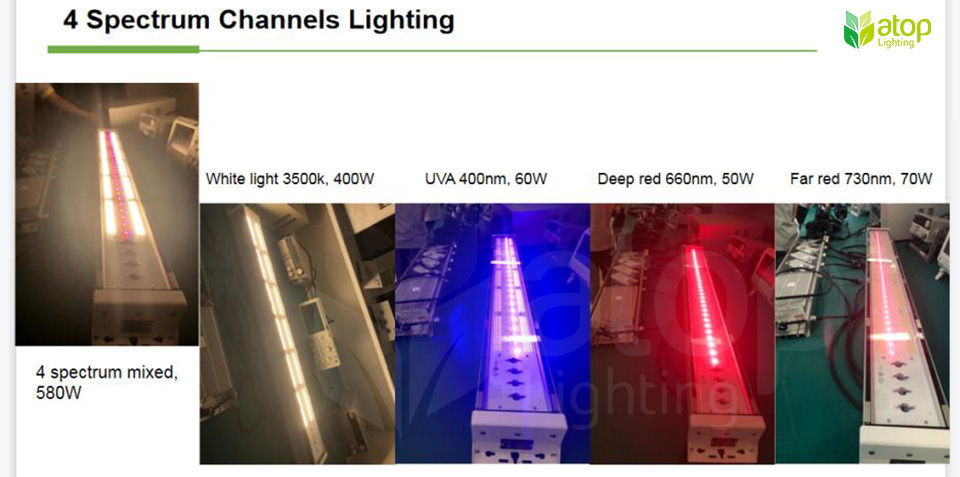White LEDs VS Variable Spectrum LEDs, Which Is Better for Your Plants
Compared to traditional light sources, LEDs are more popular in horticultural lighting because of their higher efficiency, better performance, and longer lifespan. White LED grow lights can balance plant growth with ‘’full spectrum’’. Thus, white LED grow lights are often the selections for most growers. But the LED grow light industry keeps improving and delivers many innovative lighting solutions with time. Variable spectrum LEDs are one of the newest agriculture lighting solutions to trigger the growth of plants. White LEDs and variable spectrum LEDs are some of the most common grow lights on the market. If you are looking for LED lights for your plants. You may be bothering to choose white LEDs or variable spectrum LEDs. We would like to talk about the differences between white LEDs and variable spectrum LEDs in this post. Hope it can help you decide which light is better for your plants easier.

What is white LEDs
What should we keep in mind is that plants and humans have different ways to perceive light. “White” light is not the light with a spectral color, but rather the light with a combination of different light colors. There are many combinations of light colors appear white to human eye. The first white LEDs were actually combined by red, blue, and green LEDs. Individual LEDs can’t produce white light directly from the diodes because they can only produce one color of light. Therefore, LED lighting fixtures that emit a “white” light include a wide band of the spectrum. And white LED lights often mean ‘full spectrum’ or ‘broad spectrum’ lights that similar to sunlight. For humans, white LEDs fit their eyes’ color needs well. However, much light produced by white LEDs is not in the spectra that plants use. The combination of red light and blue light has been proved to be effective in improving photosynthesis and plant growth. Compared to red/blue LEDs, white LEDs are less efficient due to the lower conversion and higher optical losses within the phosphor conversion process. But white LEDs are far better than red/blue for indoor growing because they emit a board range of spectrum for different growing stages of your plants.
What is variable spectrum LEDs
In short, variable spectrum LEDs enable growers to modify the light intensity for each color spectrum so that manage the growth cycle of plants. LED grow lights are used to mimic natural sunlight and provide sole or supplemental light for plants in greenhouses, vertical farms, and grow tents. Natural sunlight changes as the seasons roll. Plants use and react to the spectrum changes to get information about the time of day and the season of the year. For example, the sun hits the earth directly during the spring and summer, thus more blue lights reach plants in these periods. When autumn approaches, less blue light and more red light reach the earth. The changes of light spectrum tell plants that fall is starting. There is not doubt that fixed spectrum LEDs cannot meet the needs of plants throughout their growth cycle. That is what variable spectrum LEDs make senses. By adjusting light spectrum and light intensity, growers can control the lighting receipt dynamically according to their goals. With flexible lighting solutions, growers are able to control height, flowering, and even fruiting, thus maximizing plant growth, yields, and quality.
Difference between white LEDs and variable spectrum LEDs
The major difference between white LEDs and variable spectrum LEDs is that white LEDs have fixed light spectrum while variable spectrum LEDs have adjustable intensity levels for each color spectrum. Except for light spectrum, the two LEDs also differ in efficiency and lighting control.
Fixed spectrum VS variable spectrum
Both white LEDs and variable spectrum LEDs are often full spectrum or board spectrum. The main difference between white LEDs and variable spectrum LEDs is whether the intensity of each color spectrum is adjustable. White LEDs have fixed light receipt and light intensity of each color is not changeable. Variable spectrum LEDs allow growers to adjust the intensity of each color spectrum. Take one of our customized lighting solutions - four channels adjustable spectrum LED grow light as an example. This variable spectrum LED grow light has 4 spectrum channels: white light, deep red, UVA, and far red. Growers can adjust the grow light to emit white light, deep red light, UVA, or far red light solely. They can also control the grow light to emit all colors together.
Lighting efficiency
In general, variable spectrum LEDs are more efficient than white LEDs. It does not mean that white LED grow lights are not energy-efficient which has catheterized all LED lighting. White LEDs are not efficient as variable spectrum LEDs because much of the lights they produce are not used by plants. Since the intensity of each light spectrum of white LEDs is not adjustable, white LEDs waste massive energy on the high intensity green light spectrum. Plants appear green because chlorophyll reflects the green spectrum in the process of photosynthesis. Although green light has its own advantages for plant growth, excessive green light is not useful for your plants. Instead, it is a waste of energy.
Manipulate plant growth
For managing and manipulating plant growth, variable spectrum LEDs are more advantageous than white LEDs. In nature, sunlight changes with the seasons, and the spectrum that reaches the Earth also changes with it. Plants use the information of natural light including the light spectrum, intensity, and duration to know what’s happening around the environment and when they expect to receive light for photosynthesis, or not. With variable spectrum LED grow lights, you can completely control color spectrum ratios and control the plant cycle and behaviour. It is obvious that you cannot do it with white LEDs. Similarly, if you want to control plant height, flowering, yield, fruit quality, flavor, and chemical profile, you can achieve your goals with variable spectrum LEDs.
White LEDs or variable spectrum LEDs
So, which LED grow light is better for your plants? Well, the selection of white LEDs or variable spectrum LEDs depends on your applications and goals. Both white LEDs and variable spectrum LEDs have their own advantages. White LED grow lights have broad spectrum, and they can emit a wide range of wavelengths. Since white LEDs are the sole light source for indoor applications, the full spectrum can support your crop throughout the different growing stages. Variable spectrum LED grow lights are flexible and energy-efficient. No matter what type of plants and growth stages, you can control the spectra of variable spectrum LEDs to be best suited to your plants. You can also save energy because variable spectrum LEDs do not generate light that your plants don’t need.
Generally speaking, white LED grow lights are applicable for most plants and applications. If your goals are more specific, and you want to grow professionally, variable spectrum LEDs would be a better choice for you. If you are still struggling to weigh your options, contact our lighting experts for advice.


